IEC 61851-24
Edition 1.0 2014-03
®
INTERNATIONAL
STANDARD
NORME
INTERNATIONALE
Electric vehicle conductive charging system –
Part 24: Digital communication between a d.c. EV charging station and an
electric vehicle for control of d.c. charging
Système de charge conductive pour véhicules électriques –
Partie 24: Communication digitale entre la borne de charge à courant continu et
le véhicule électrique pour le contrôle de la charge à courant continu
)
r
f
-
n
e
(
3
0
-
4
1
0
2
:
4
2
-
1
5
8
1
6
C
E
I
colourinside�
THIS PUBLICATION IS COPYRIGHT PROTECTED
Copyright © 2014 IEC, Geneva, Switzerland
All rights reserved. Unless otherwise specified, no part of this publication may be reproduced or utilized in any form
or by any means, electronic or mechanical, including photocopying and microfilm, without permission in writing from
either IEC or IEC's member National Committee in the country of the requester. If you have any questions about IEC
copyright or have an enquiry about obtaining additional rights to this publication, please contact the address below or
your local IEC member National Committee for further information.
Droits de reproduction réservés. Sauf indication contraire, aucune partie de cette publication ne peut être reproduite
ni utilisée sous quelque forme que ce soit et par aucun procédé, électronique ou mécanique, y compris la photocopie
et les microfilms, sans l'accord écrit de l'IEC ou du Comité national de l'IEC du pays du demandeur. Si vous avez des
questions sur le copyright de l'IEC ou si vous désirez obtenir des droits supplémentaires sur cette publication, utilisez
les coordonnées ci-après ou contactez le Comité national de l'IEC de votre pays de résidence.
IEC Central Office
3, rue de Varembé
CH-1211 Geneva 20
Switzerland
Tel.: +41 22 919 02 11
Fax: +41 22 919 03 00
info@iec.ch
www.iec.ch
for consulting
About the IEC
The International Electrotechnical Commission (IEC) is the leading global organization that prepares and publishes
International Standards for all electrical, electronic and related technologies.
About IEC publications
The technical content of IEC publications is kept under constant review by the IEC. Please make sure that you have the
latest edition, a corrigenda or an amendment might have been published.
IEC Catalogue - webstore.iec.ch/catalogue
The stand-alone application
the entire
bibliographical information on IEC International Standards,
Technical Specifications, Technical Reports and other
documents. Available for PC, Mac OS, Android Tablets and
iPad.
IEC publications search - www.iec.ch/searchpub
The advanced search enables to find IEC publications by a
variety of criteria
technical
committee,…). It also gives information on projects, replaced
and withdrawn publications.
IEC Just Published - webstore.iec.ch/justpublished
Stay up to date on all new IEC publications. Just Published
details all new publications released. Available online and
also once a month by email.
Electropedia - www.electropedia.org
The world's leading online dictionary of electronic and
electrical terms containing more than 30 000 terms and
definitions in English and French, with equivalent terms in 14
additional
languages. Also known as
International
Electrotechnical Vocabulary (IEV) online.
IEC Glossary - std.iec.ch/glossary
More than 55 000 electrotechnical terminology entries in
English and French extracted from the Terms and Definitions
clause of IEC publications issued since 2002. Some entries
have been collected from earlier publications of IEC TC 37,
77, 86 and CISPR.
IEC Customer Service Centre - webstore.iec.ch/csc
If you wish to give us your feedback on this publication or
need further assistance, please contact the Customer Service
Centre: csc@iec.ch.
(reference number,
text,
the
les
sur
Normes
A propos de l'IEC
La Commission Electrotechnique Internationale (IEC) est la première organisation mondiale qui élabore et publie des
Normes internationales pour tout ce qui a trait à l'électricité, à l'électronique et aux technologies apparentées.
A propos des publications IEC
Le contenu technique des publications IEC est constamment revu. Veuillez vous assurer que vous possédez l’édition la
plus récente, un corrigendum ou amendement peut avoir été publié.
Catalogue IEC - webstore.iec.ch/catalogue
Application autonome pour consulter tous les renseignements
bibliographiques
internationales,
Spécifications techniques, Rapports techniques et autres
documents de l'IEC. Disponible pour PC, Mac OS, tablettes
Android et iPad.
Recherche de publications IEC - www.iec.ch/searchpub
La recherche avancée permet de trouver des publications IEC
en utilisant différents critères (numéro de référence, texte,
comité d’études,…). Elle donne aussi des informations sur les
projets et les publications remplacées ou retirées.
IEC Just Published - webstore.iec.ch/justpublished
Restez informé sur les nouvelles publications IEC. Just
Published détaille
les nouvelles publications parues.
Disponible en ligne et aussi une fois par mois par email.
Electropedia - www.electropedia.org
Le premier dictionnaire en ligne de termes électroniques et
électriques. Il contient plus de 30 000 termes et définitions en
anglais et en français, ainsi que les termes équivalents dans
14 langues additionnelles. Egalement appelé Vocabulaire
Electrotechnique International (IEV) en ligne.
Glossaire IEC - std.iec.ch/glossary
Plus de 55 000 entrées terminologiques électrotechniques, en
anglais et en français, extraites des articles Termes et
Définitions des publications IEC parues depuis 2002. Plus
certaines entrées antérieures extraites des publications des
CE 37, 77, 86 et CISPR de l'IEC.
Service Clients - webstore.iec.ch/csc
Si vous désirez nous donner des commentaires sur cette
publication ou si vous avez des questions contactez-nous:
csc@iec.ch.
--```,,`,,,,,``,,````,,,,`,````,-`-`,,`,,`,`,,`---�
IEC 61851-24
Edition 1.0 2014-03
®
INTERNATIONAL
STANDARD
NORME
INTERNATIONALE
Electric vehicle conductive charging system –
Part 24: Digital communication between a d.c. EV charging station and an
electric vehicle for control of d.c. charging
Système de charge conductive pour véhicules électriques –
Partie 24: Communication digitale entre la borne de charge à courant continu et
le véhicule électrique pour le contrôle de la charge à courant continu
INTERNATIONAL
ELECTROTECHNICAL
COMMISSION
COMMISSION
ELECTROTECHNIQUE
INTERNATIONALE
ICS 43.120
PRICE CODE
CODE PRIX
V
ISBN 978-2-8322-1441-1
Warning! Make sure that you obtained this publication from an authorized distributor.
Attention! Veuillez vous assurer que vous avez obtenu cette publication via un distributeur agréé.
® Registered trademark of the International Electrotechnical Commission
Marque déposée de la Commission Electrotechnique Internationale
colourinside�
– 2 –
IEC 61851-24:2014 © IEC 2014
CONTENTS
FOREWORD ........................................................................................................................... 3
INTRODUCTION ..................................................................................................................... 5
1
Scope .............................................................................................................................. 6
2 Normative references ...................................................................................................... 6
3
Terms and definitions ...................................................................................................... 7
4
System configuration ....................................................................................................... 7
5 Digital communication architecture .................................................................................. 7
6 Charging control process ................................................................................................. 7
7 Overview of charging control ........................................................................................... 7
8
Exchanged information for d.c. charging control .............................................................. 8
Annex A (normative) Digital communication for control of d.c. EV charging system A ........... 10
Annex B (normative) Digital communication for control of d.c. EV charging system B ........... 20
Annex C (normative) Digital communication for control of d.c. charging system C
(Combined system) ........................................................................................................ 27
Bibliography .......................................................................................................................... 29
Figure 1 – Digital communication between a d.c. EV charging station and an electric
vehicle for control of d.c. charging .......................................................................................... 8
Figure A.1 – Sequence diagram of d.c. charging control communication for system A ........... 13
Figure A.2 – CAN-bus circuit diagram ................................................................................... 18
Figure A.3 – Dedicated CAN communication between vehicle and d.c. EV charging
station .................................................................................................................................. 19
Figure B.1 – Sequence diagram of d.c. charging control communication for system B ........... 20
Table 1 – Exchanged information for d.c. charging control ...................................................... 8
Table A.1 – Communication actions and parameters during d.c. charging control
process between system A station and vehicle (1 of 2) ......................................................... 11
Table A.2 – Exchanged parameter during d.c. charging control process between
system A station and vehicle (1 of 4) .................................................................................... 14
Table A.3 – The physical/data link layer specifications for system A ..................................... 18
Table B.1 – Communication actions and parameters during d.c. charging control
process between system B station and vehicle ..................................................................... 21
Table B.2 – Parameters in charge handshake stage for system B ......................................... 22
Table B.3 – Parameters in charge parameter configuration stage for system B ..................... 23
Table B.4 – Parameters in charging stage for system B (1 of 2) ............................................ 24
Table B.5 – Parameters in charge ending stage for system B ............................................... 25
Table B.6 – Error parameters for system B ........................................................................... 25
Table B.7 – Physical/data link layer specifications for system B ........................................... 26
Table C.1 – Required exchanged parameters for d.c. charging control for system C ............. 28
--```,,`,,,,,``,,````,,,,`,````,-`-`,,`,,`,`,,`---�
IEC 61851-24:2014 © IEC 2014
– 3 –
INTERNATIONAL ELECTROTECHNICAL COMMISSION
____________
ELECTRIC VEHICLE CONDUCTIVE CHARGING SYSTEM –
Part 24: Digital communication between a d.c. EV charging
station and an electric vehicle for control of d.c. charging
FOREWORD
1) The International Electrotechnical Commission (IEC) is a worldwide organization for standardization comprising
all national electrotechnical committees (IEC National Committees). The object of IEC is to promote
international co-operation on all questions concerning standardization in the electrical and electronic fields. To
this end and in addition to other activities, IEC publishes International Standards, Technical Specifications,
Technical Reports, Publicly Available Specifications (PAS) and Guides (hereafter referred to as “IEC
Publication(s)”). Their preparation is entrusted to technical committees; any IEC National Committee interested
in the subject dealt with may participate in this preparatory work. International, governmental and non-
governmental organizations liaising with the IEC also participate in this preparation. IEC collaborates closely
with the International Organization for Standardization (ISO) in accordance with conditions determined by
agreement between the two organizations.
2) The formal decisions or agreements of IEC on technical matters express, as nearly as possible, an international
consensus of opinion on the relevant subjects since each technical committee has representation from all
interested IEC National Committees.
3) IEC Publications have the form of recommendations for international use and are accepted by IEC National
Committees in that sense. While all reasonable efforts are made to ensure that the technical content of IEC
Publications is accurate, IEC cannot be held responsible for the way in which they are used or for any
misinterpretation by any end user.
4) In order to promote international uniformity, IEC National Committees undertake to apply IEC Publications
transparently to the maximum extent possible in their national and regional publications. Any divergence
between any IEC Publication and the corresponding national or regional publication shall be clearly indicated in
the latter.
5) IEC itself does not provide any attestation of conformity. Independent certification bodies provide conformity
assessment services and, in some areas, access to IEC marks of conformity. IEC is not responsible for any
services carried out by independent certification bodies.
6) All users should ensure that they have the latest edition of this publication.
7) No liability shall attach to IEC or its directors, employees, servants or agents including individual experts and
members of its technical committees and IEC National Committees for any personal injury, property damage or
other damage of any nature whatsoever, whether direct or indirect, or for costs (including legal fees) and
expenses arising out of the publication, use of, or reliance upon, this IEC Publication or any other IEC
Publications.
8) Attention is drawn to the Normative references cited in this publication. Use of the referenced publications is
indispensable for the correct application of this publication.
9) Attention is drawn to the possibility that some of the elements of this IEC Publication may be the subject of
patent rights. IEC shall not be held responsible for identifying any or all such patent rights.
International Standard IEC 61851-24 has been prepared by IEC technical committee 69:
Electric road vehicles and electric industrial trucks.
The text of this standard is based on the following documents:
FDIS
69/273FDIS
Report on voting
69/280/RVD
Full information on the voting for the approval of this standard can be found in the report on
voting indicated in the above table.
This publication has been drafted in accordance with the ISO/IEC Directives, Part 2.
A list of all parts in the IEC 61851 series, published under the general title Electric vehicle
conductive charging system, can be found on the IEC website.
--```,,`,,,,,``,,````,,,,`,````,-`-`,,`,,`,`,,`---�
– 4 –
IEC 61851-24:2014 © IEC 2014
The committee has decided that the contents of this publication will remain unchanged until
the stability date indicated on the IEC web site under "http://webstore.iec.ch" in the data
related to the specific publication. At this date, the publication will be
reconfirmed,
•
• withdrawn,
•
• amended.
replaced by a revised edition, or
it contains colours which are considered
IMPORTANT – The 'colour inside' logo on the cover page of this publication indicates
that
for the correct
understanding of its contents. Users should therefore print this document using a
colour printer.
to be useful
--```,,`,,,,,``,,````,,,,`,````,-`-`,,`,,`,`,,`---�
IEC 61851-24:2014 © IEC 2014
– 5 –
INTRODUCTION
to
The introduction and commercialisation of electric vehicles has been accelerated in the global
the global concerns on CO2 reduction and energy security.
market, responding
Concurrently, the development of charging infrastructure for electric vehicles has also been
expanding. As supplementary system of a.c. charging system, d.c. charging is recognized as
an effective solution to extend the available range of electric vehicles, and different d.c.
charging systems are being used over the world. The international standardization in terms of
charging infrastructure including d.c. charging systems is indispensable for the diffusion of
electric vehicles, and this standard is developed for the manufacturers’ convenience by
providing general specifications for control communication protocols between off-board d.c.
charger and electric vehicles.
--```,,`,,,,,``,,````,,,,`,````,-`-`,,`,,`,`,,`---�
– 6 –
IEC 61851-24:2014 © IEC 2014
ELECTRIC VEHICLE CONDUCTIVE CHARGING SYSTEM –
Part 24: Digital communication between a d.c. EV charging
station and an electric vehicle for control of d.c. charging
1 Scope
This part of IEC 61851, together with IEC 61851-23, applies to digital communication between
a d.c. EV charging station and an electric road vehicle (EV) for control of d.c. charging, with
an a.c. or d.c. input voltage up to 1 000 V a.c. and up to 1 500 V d.c. for the conductive
charging procedure.
The EV charging mode is mode 4, according to IEC 61851-23. The charging station supplied
by high voltage a.c. supply is not covered by this standard.
Annexes A, B, and C give descriptions of digital communications for control of d.c. charging
specific to d.c. EV charging systems A, B and C as defined in Part 23.
2 Normative references
The following documents, in whole or in part, are normatively referenced in this document and
are indispensable for its application. For dated references, only the edition cited applies. For
undated
references,
(including any
amendments) applies.
referenced document
latest edition of
the
the
IEC 61851-1:2010, Electric vehicle conductive charging system – Part 1: General
requirements
IEC 61851-23:2014, Electric vehicle conductive charging system – Part 23: DC electric
vehicle charging station
ISO/IEC 15118-11, Road vehicles – Vehicle to grid communication interface – Part 1: General
information and use-case definition
ISO/IEC 15118-2:—1, Road vehicles – Vehicle to grid communication interface – Part 2:
Technical protocol description and open systems interconnections (OSI) layer requirements
ISO/IEC 15118-3:—1, Road vehicles – Vehicle to grid communication interface – Part 3
Physical layer requirements
ISO 11898-1:2003, Road vehicles – Controller area network (CAN) – Part 1: Data link layer
and physical signalling
ISO 11898-2:2003, Road vehicles – Controller area network (CAN) – Part 2: High-speed
medium access unit
--```,,`,,,,,``,,````,,,,`,````,-`-`,,`,,`,`,,`---�
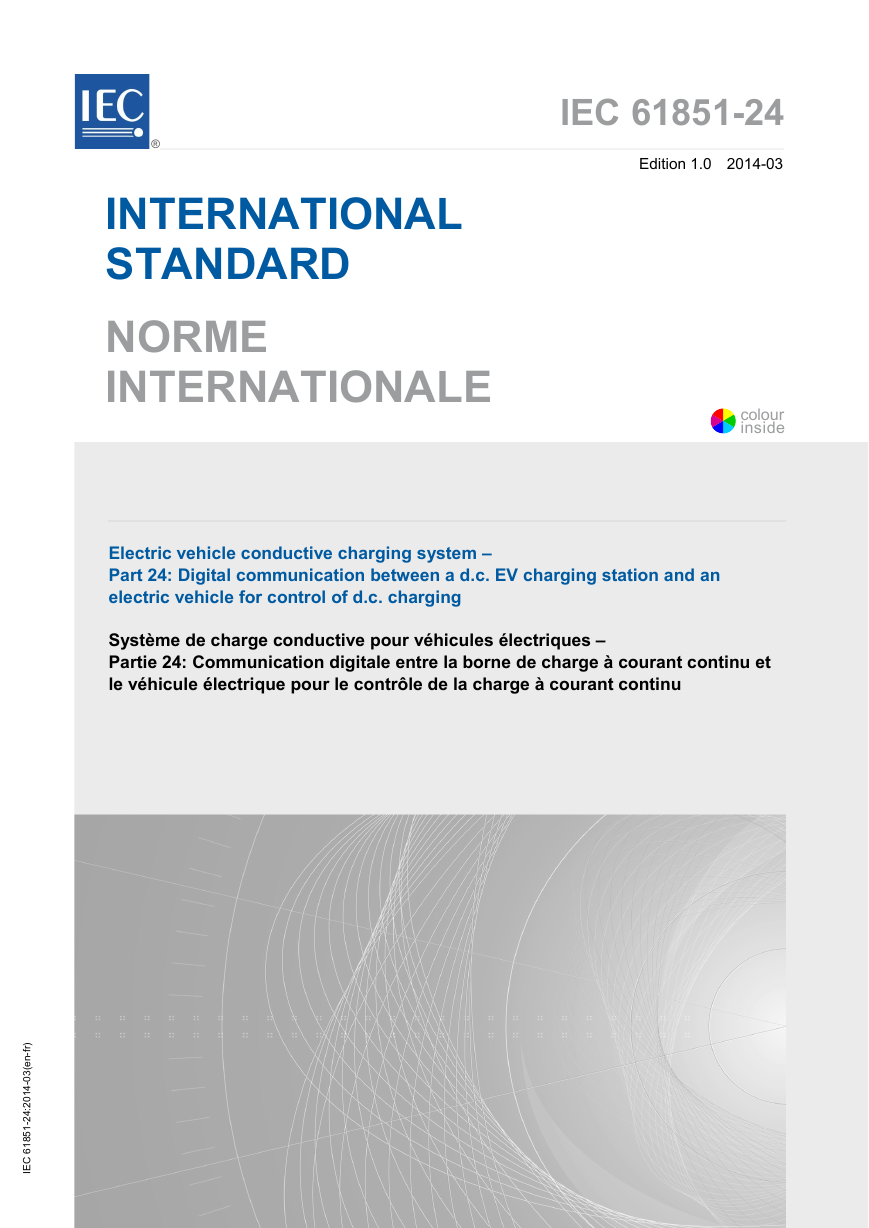
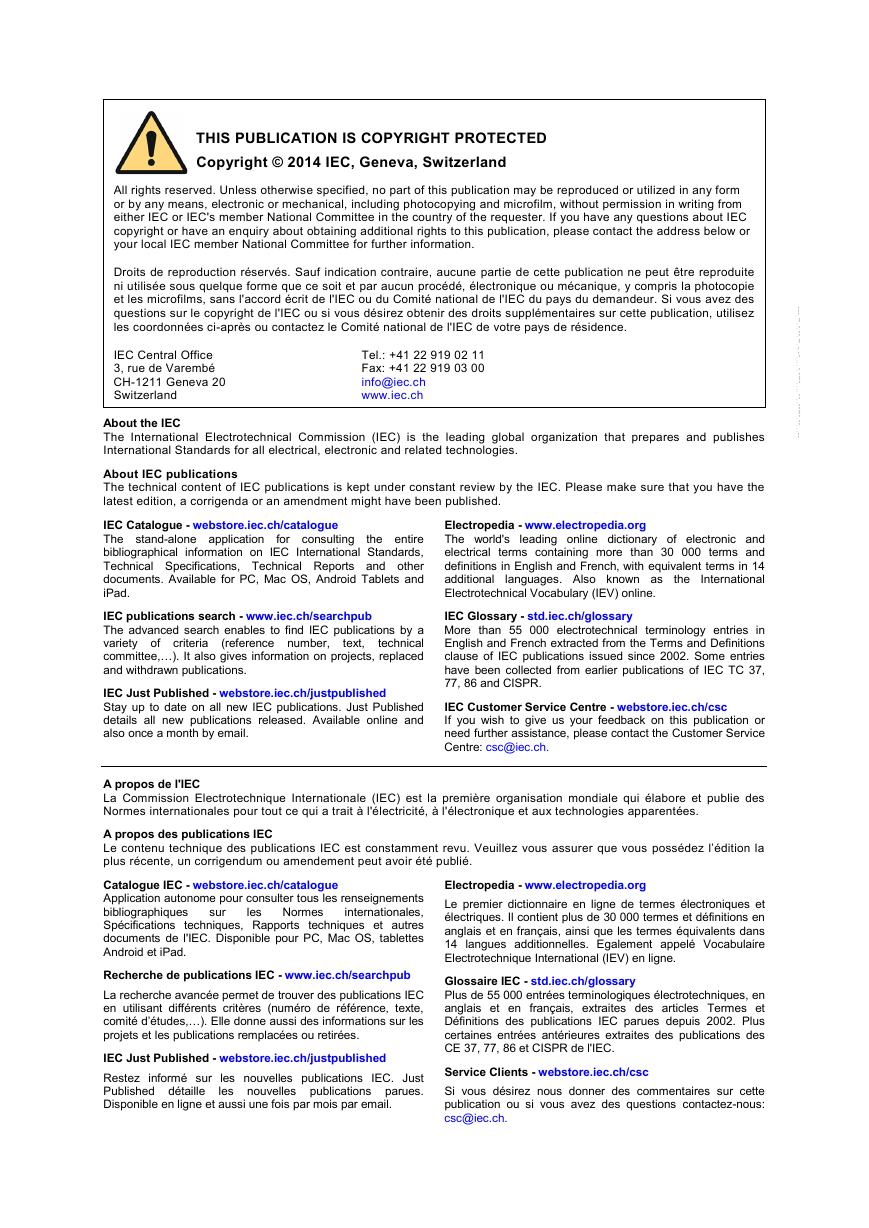
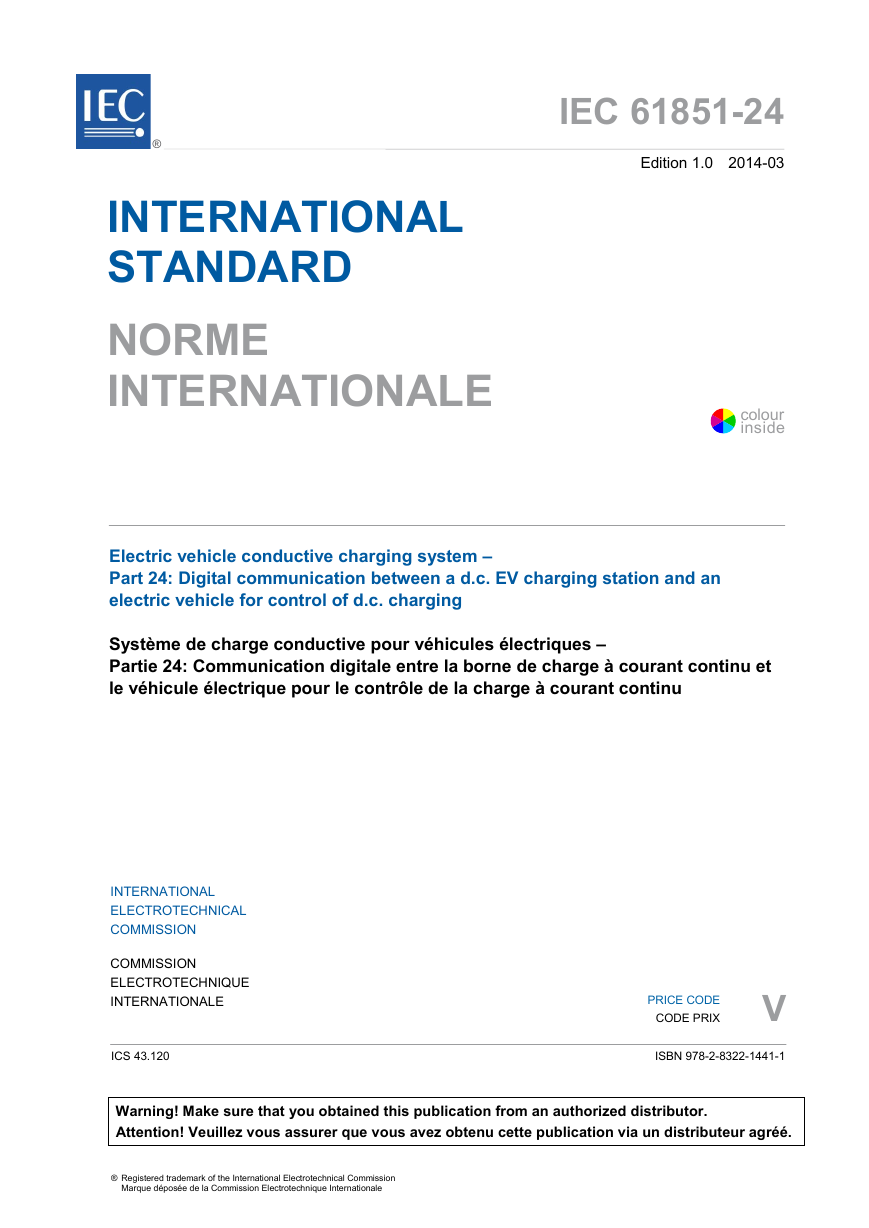
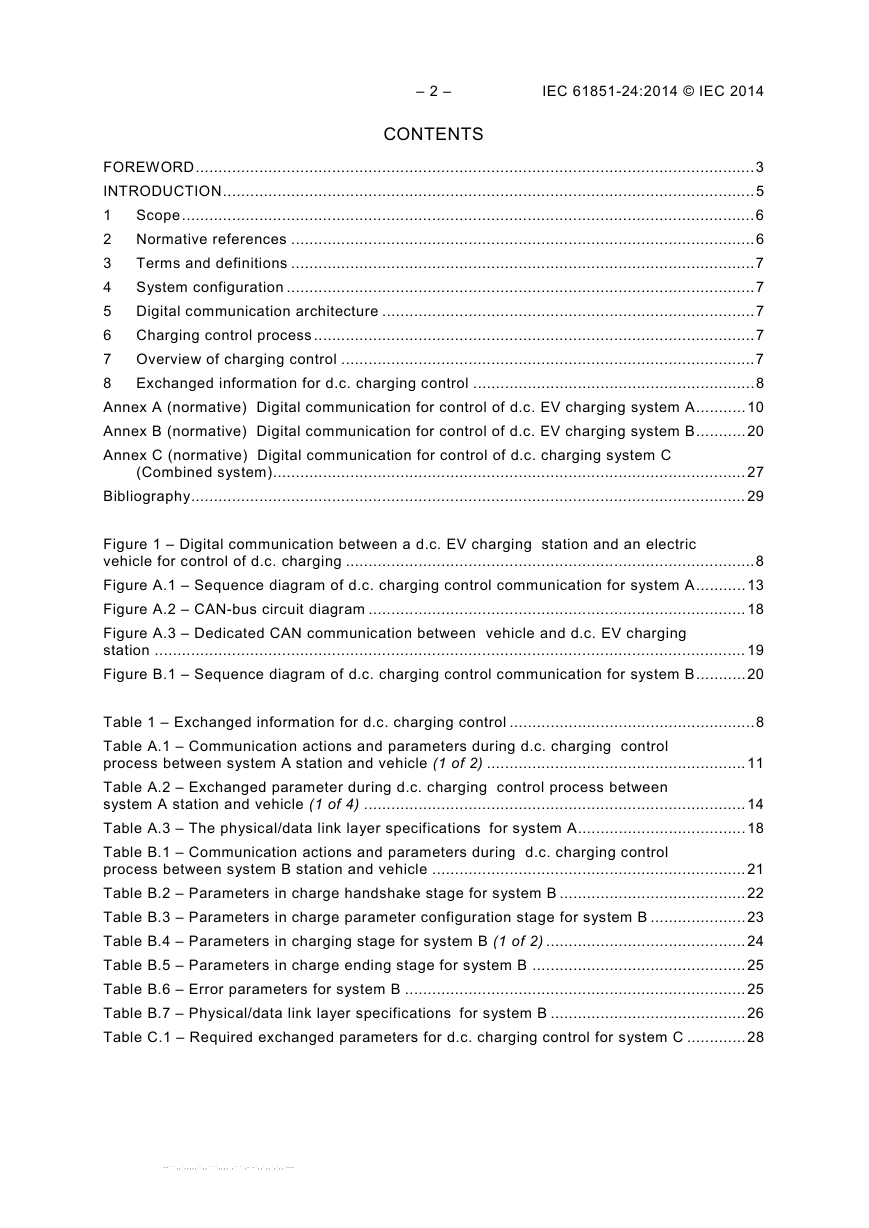
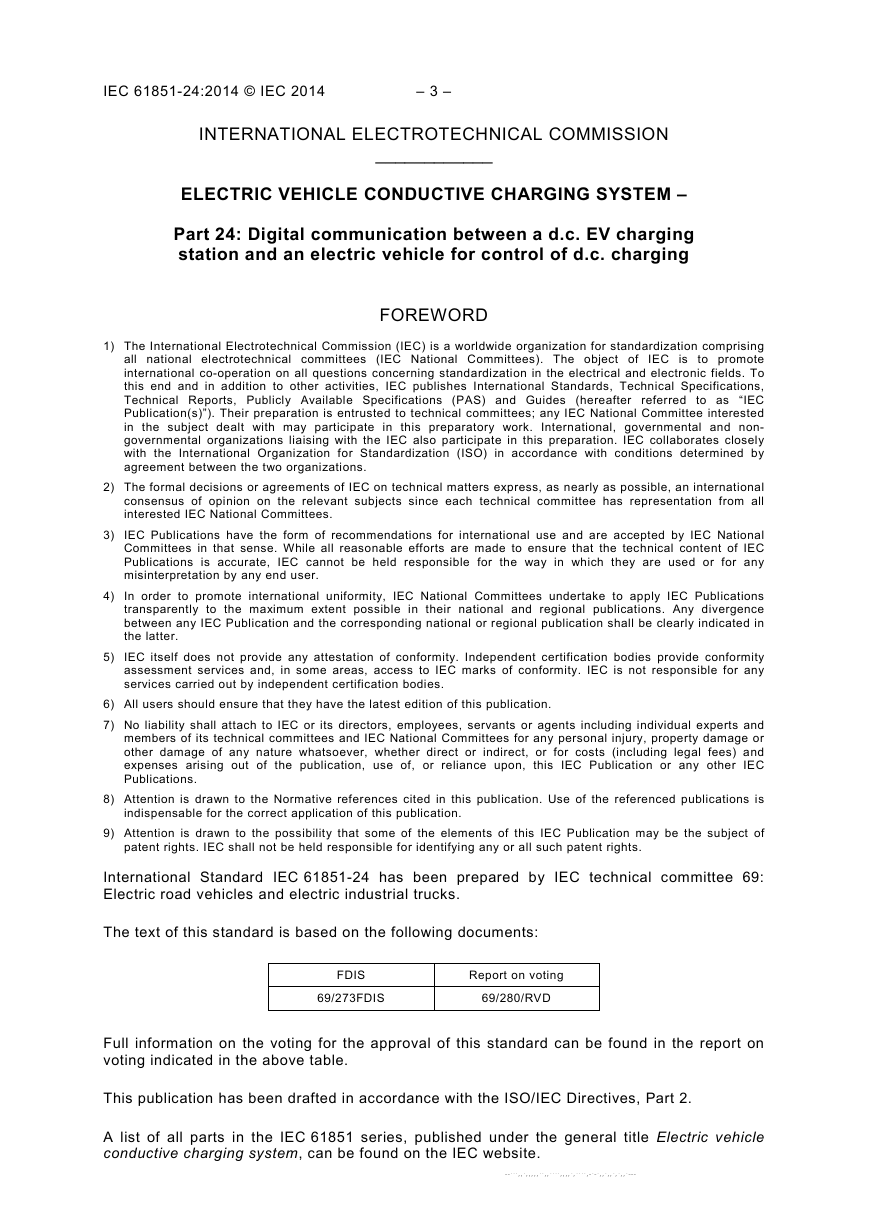
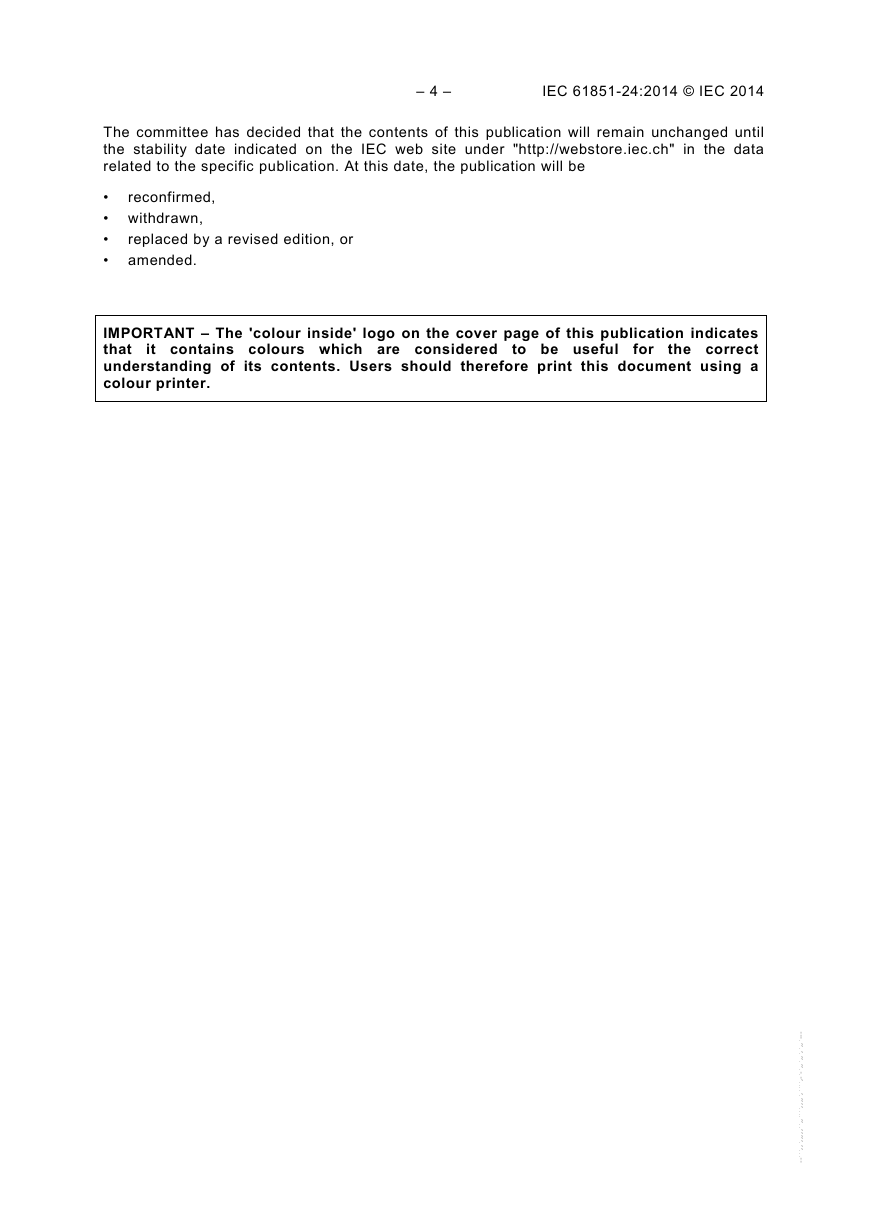
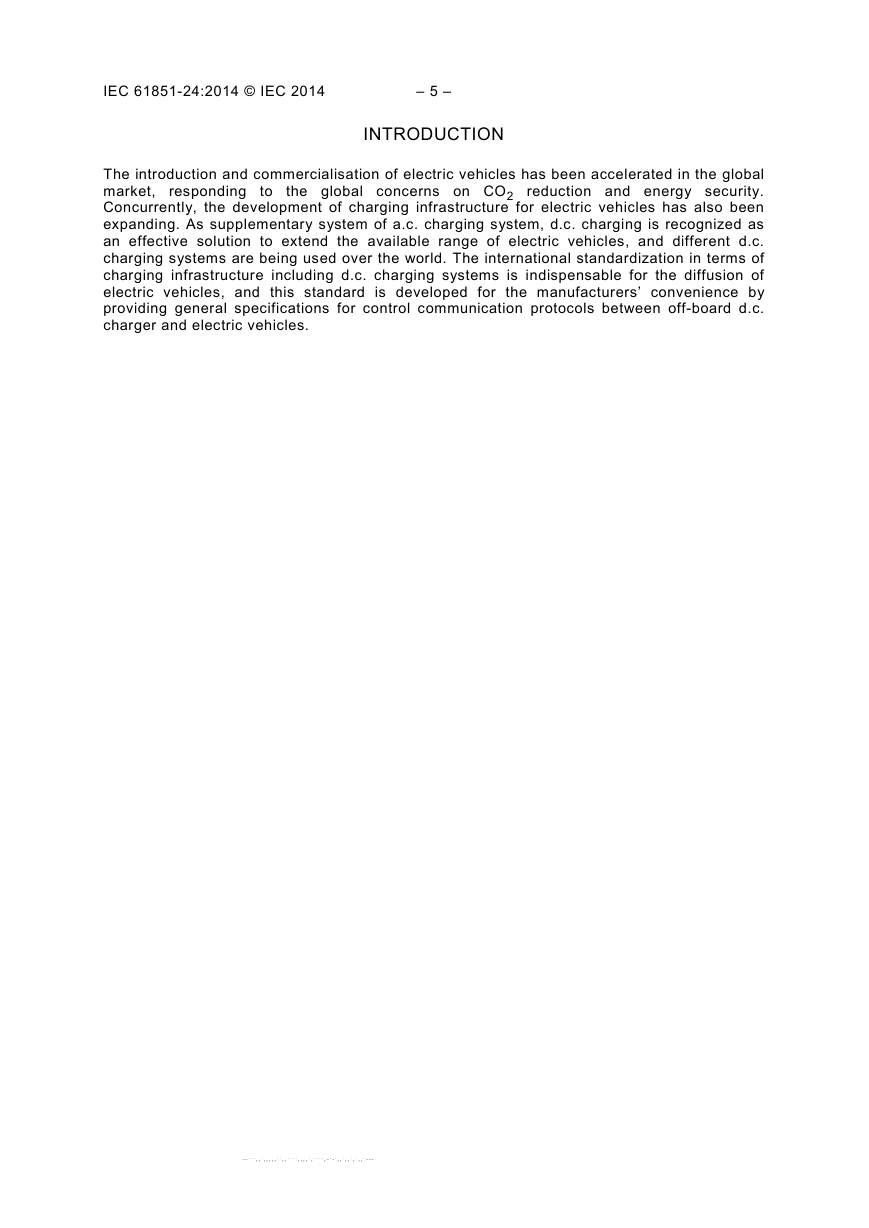
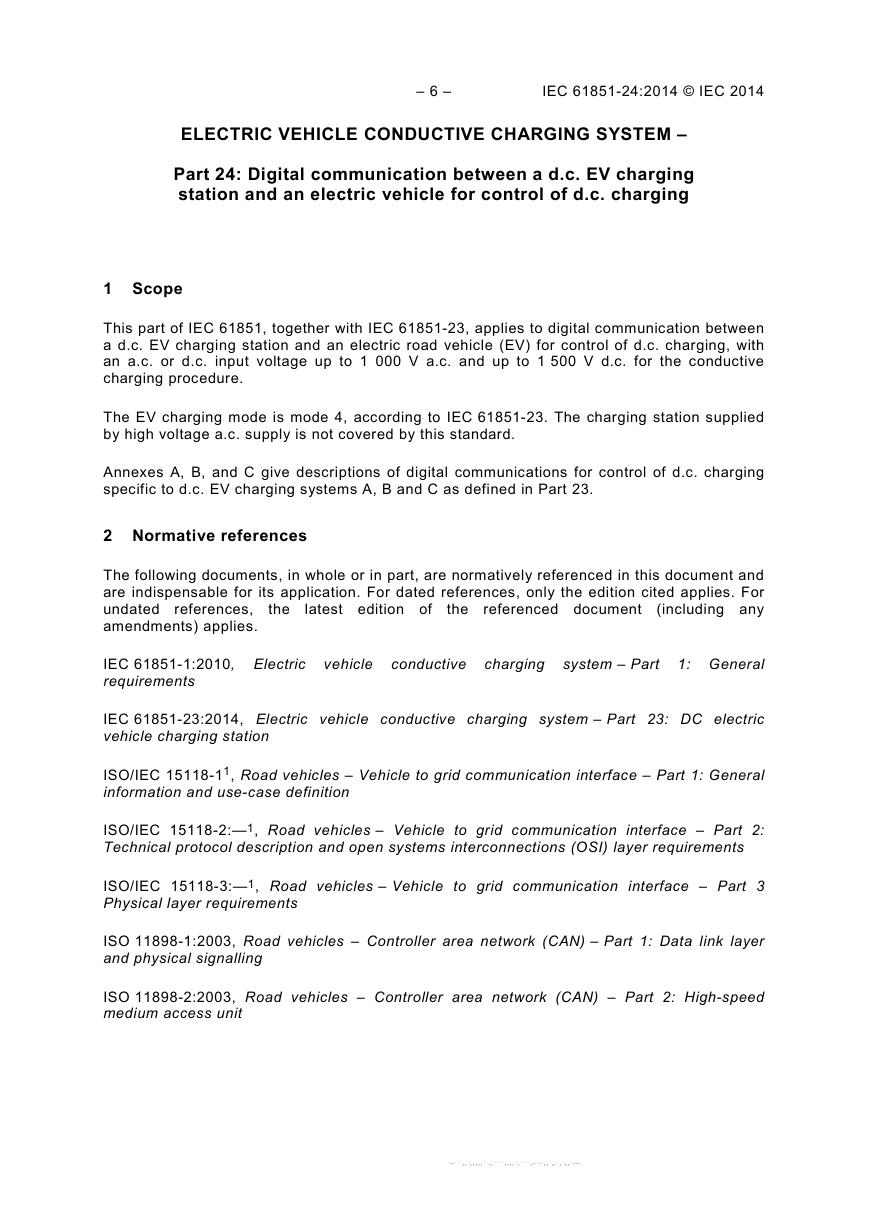








 2023年江西萍乡中考道德与法治真题及答案.doc
2023年江西萍乡中考道德与法治真题及答案.doc 2012年重庆南川中考生物真题及答案.doc
2012年重庆南川中考生物真题及答案.doc 2013年江西师范大学地理学综合及文艺理论基础考研真题.doc
2013年江西师范大学地理学综合及文艺理论基础考研真题.doc 2020年四川甘孜小升初语文真题及答案I卷.doc
2020年四川甘孜小升初语文真题及答案I卷.doc 2020年注册岩土工程师专业基础考试真题及答案.doc
2020年注册岩土工程师专业基础考试真题及答案.doc 2023-2024学年福建省厦门市九年级上学期数学月考试题及答案.doc
2023-2024学年福建省厦门市九年级上学期数学月考试题及答案.doc 2021-2022学年辽宁省沈阳市大东区九年级上学期语文期末试题及答案.doc
2021-2022学年辽宁省沈阳市大东区九年级上学期语文期末试题及答案.doc 2022-2023学年北京东城区初三第一学期物理期末试卷及答案.doc
2022-2023学年北京东城区初三第一学期物理期末试卷及答案.doc 2018上半年江西教师资格初中地理学科知识与教学能力真题及答案.doc
2018上半年江西教师资格初中地理学科知识与教学能力真题及答案.doc 2012年河北国家公务员申论考试真题及答案-省级.doc
2012年河北国家公务员申论考试真题及答案-省级.doc 2020-2021学年江苏省扬州市江都区邵樊片九年级上学期数学第一次质量检测试题及答案.doc
2020-2021学年江苏省扬州市江都区邵樊片九年级上学期数学第一次质量检测试题及答案.doc 2022下半年黑龙江教师资格证中学综合素质真题及答案.doc
2022下半年黑龙江教师资格证中学综合素质真题及答案.doc